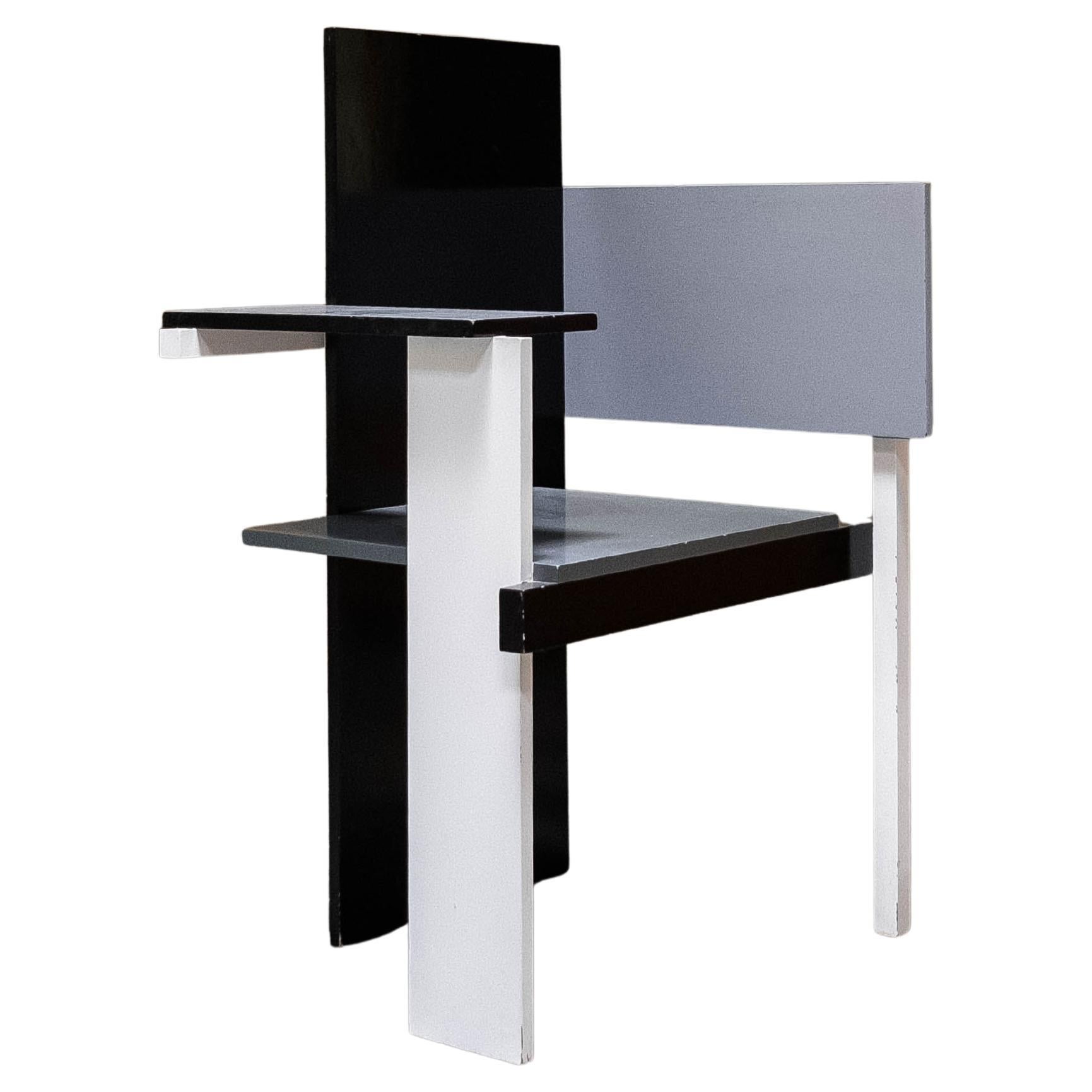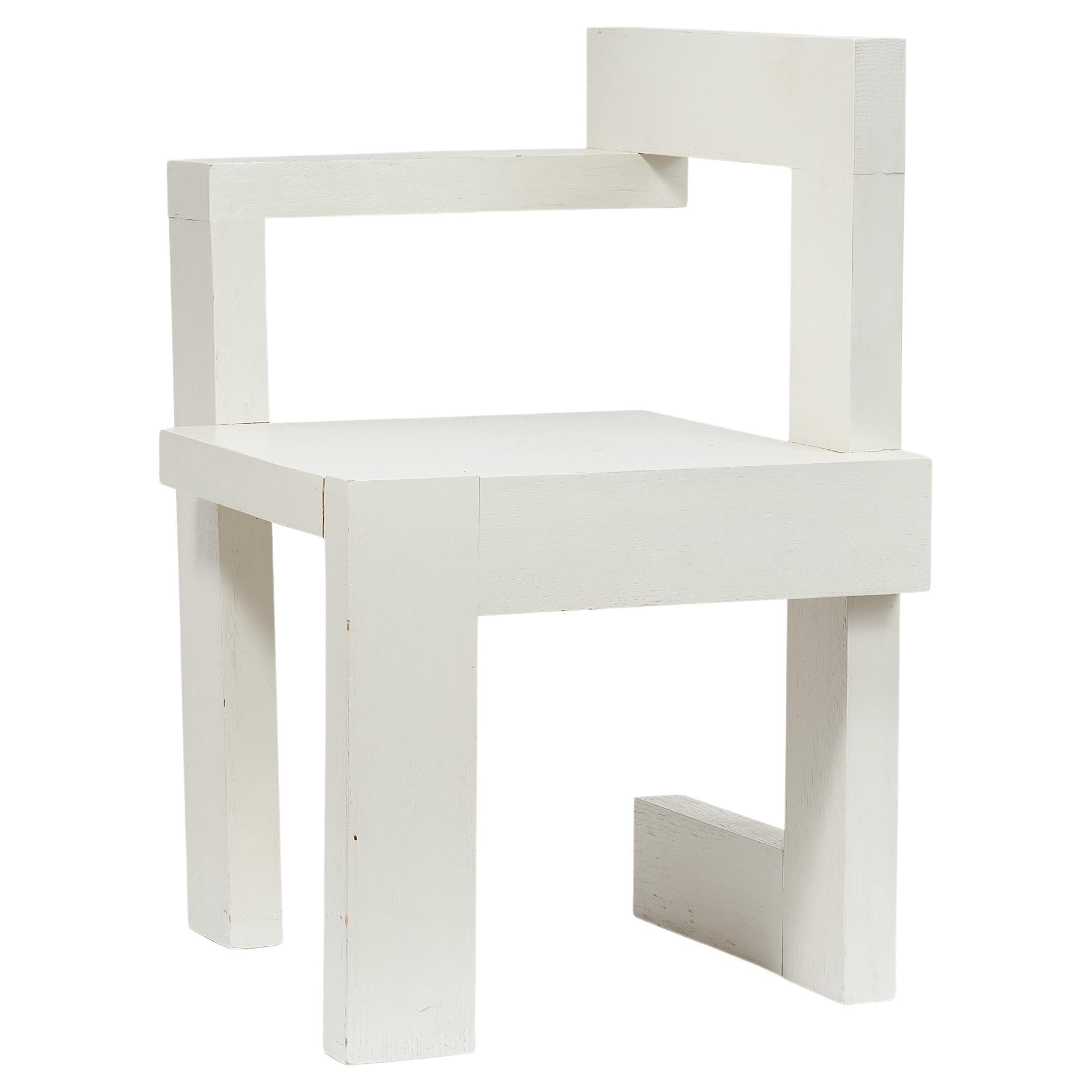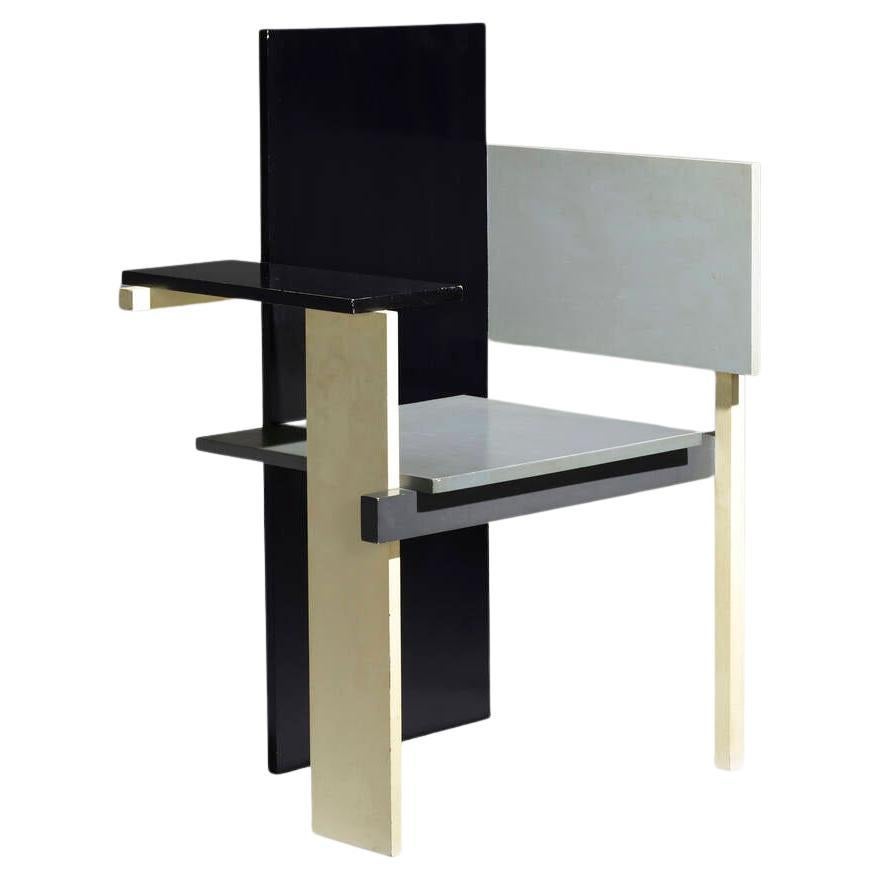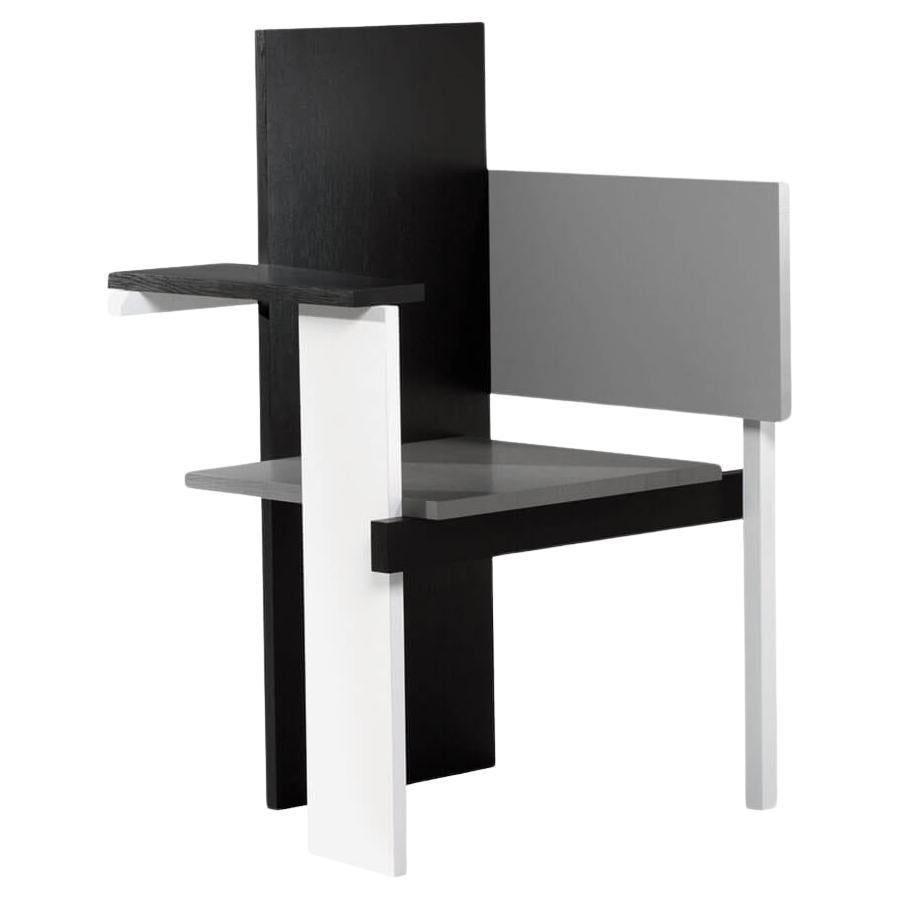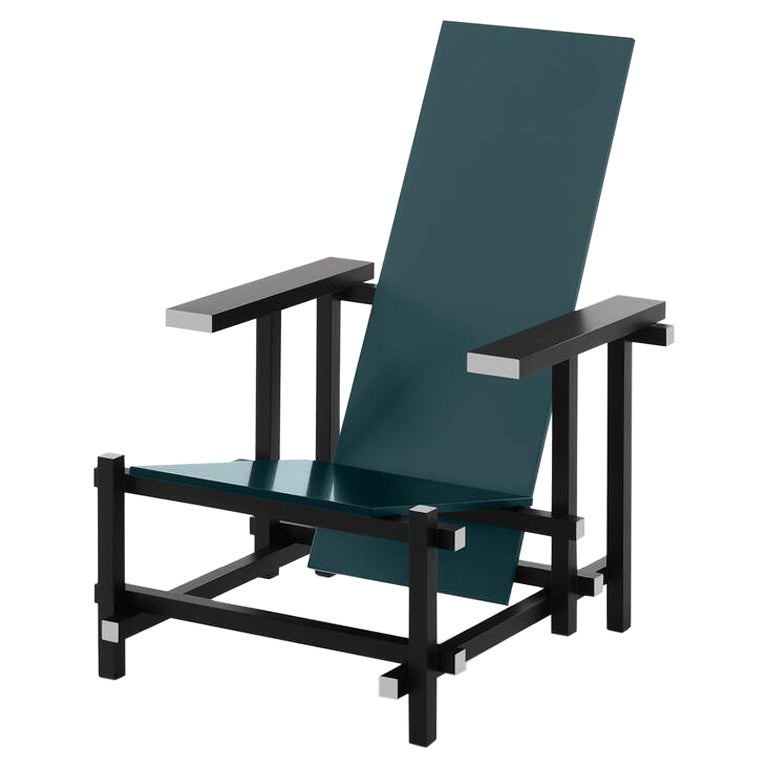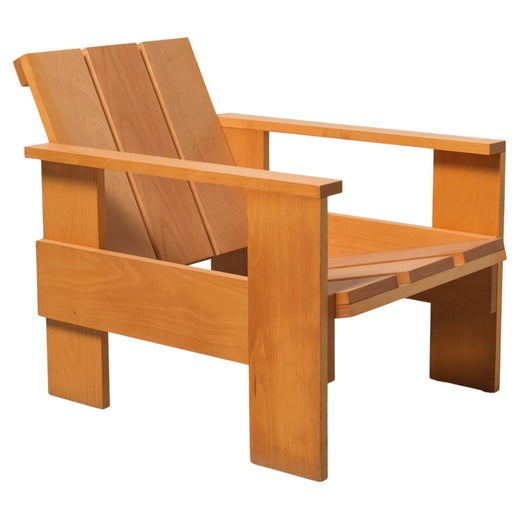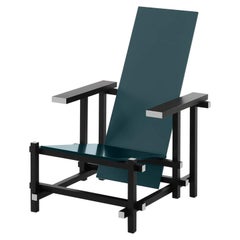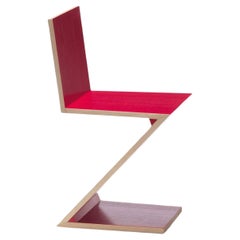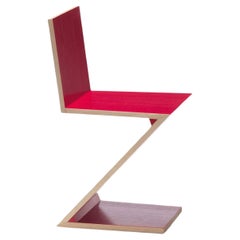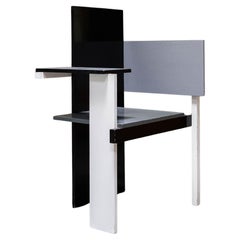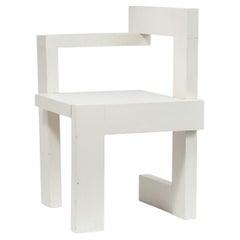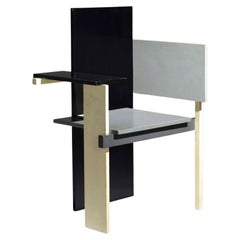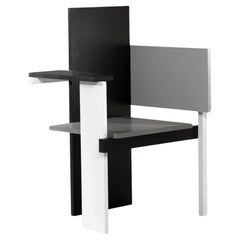Rietveld 'Berlin Chair and End Table' Model Toy, 1985
About the Item
- Creator:Gerrit Rietveld (Designer)
- Dimensions:Height: 11.82 in (30 cm)Width: 1.38 in (3.5 cm)Depth: 2.56 in (6.5 cm)
- Style:Mid-Century Modern (Of the Period)
- Materials and Techniques:
- Place of Origin:
- Period:1980-1989
- Date of Manufacture:1985
- Condition:Wear consistent with age and use.
- Seller Location:Barcelona, ES
- Reference Number:Seller: RB.CHAIRENDTABLEMODELTOY.1A.AR.RL.000971stDibs: LU1427228330012
Gerrit Rietveld
Best known for his Red and Blue chair, a modernist icon created using only two plywood plates and 15 connecting bars, Dutch designer Gerrit Thomas Rietveld trained as a cabinetmaker, and his bold vision for furniture was supported by his expertise in construction and craftsmanship.
Born in Utrecht, Rietveld learned goldsmithing in addition to the cabinetry apprenticeship he had in his carpenter father’s workshop. He studied draftsmanship with architect Piet Klaarhamer at the Utrecht Museum of Applied Arts and opened his own furniture workshop in 1917. In the 1930s, Rietveld began to experiment with then-unusual materials like plywood and aluminum, and he pursued intellectual concepts through his design, even considering a seat as a resting place for the body and the soul.
Designed in 1918, the minimalist Red and Blue chair is widely coveted by collectors and gained admirers in the likes of legendary American sculptor and designer Donald Judd over the years. (Examples of Rietveld’s designs can be found in Judd’s restored home-museum in New York City.) The Red and Blue chair is so stunning in its geometric simplicity that it is one of the most important symbols of the Dutch art and design movement of the early 20th century called De Stijl, of which Rietveld was an important part. De Stijl means “the Style” and was an effort to express utopian values through pure abstraction in design and the use of primary colors.
Another example of Rietveld’s celebrated seating furniture is the Zig-Zag chair, which was commissioned by the Dutch department store Metz & Co. and intended to be mass-produced. The resulting design — to which the rights to manufacture were bought by Cassina in 1971 — is the essence of the De Stijl movement and an example of Rietveld’s experiments with jointless chairs made from a single material, wood. The Zig-Zag chair’s armless, legless, elegant form is pure abstraction, yet it is also sturdy and comfortable.
Later in his career, Rietveld worked more often as an architect, designing buildings in prestigious settings like the Venice Biennale. He was a pioneer in more ways than one: The first building he designed, Rietveld Schröder House in Utrecht in 1924, is a radically modern space and has been a UNESCO World Heritage Site since 2000.
Find vintage Gerrit Rietveld furniture on 1stDibs.
- ShippingRetrieving quote...Shipping from: Barcelona, Spain
- Return Policy
More From This Seller
View All2010s Italian Mid-Century Modern Armchairs
Leather, Wood
2010s Italian Mid-Century Modern Armchairs
Leather, Wood
2010s Italian Mid-Century Modern Chairs
Wood
2010s Italian Mid-Century Modern Chairs
Wood
2010s Italian Mid-Century Modern Chairs
Wood
2010s Italian Mid-Century Modern Chairs
Wood
You May Also Like
Vintage 1920s American Modern Chairs
Wood, Lacquer
Vintage 1960s Dutch De Stijl Chairs
Oak
Vintage 1970s Dutch De Stijl Chairs
Oak
21st Century and Contemporary Dutch Modern Chairs
Oak
Late 20th Century Dutch Mid-Century Modern Books
Paper
Vintage 1950s Dutch Mid-Century Modern Chairs
Wood, Plywood
